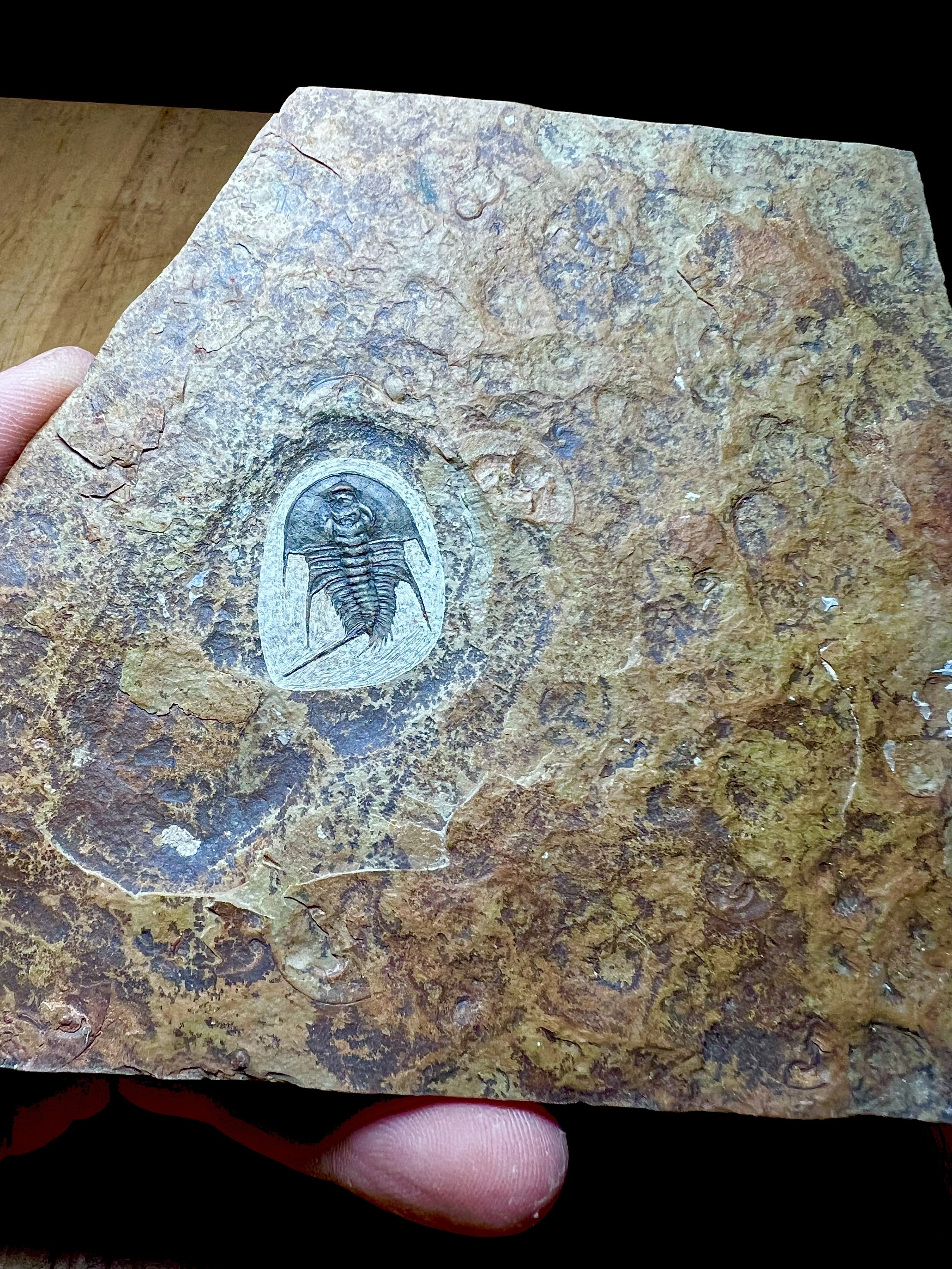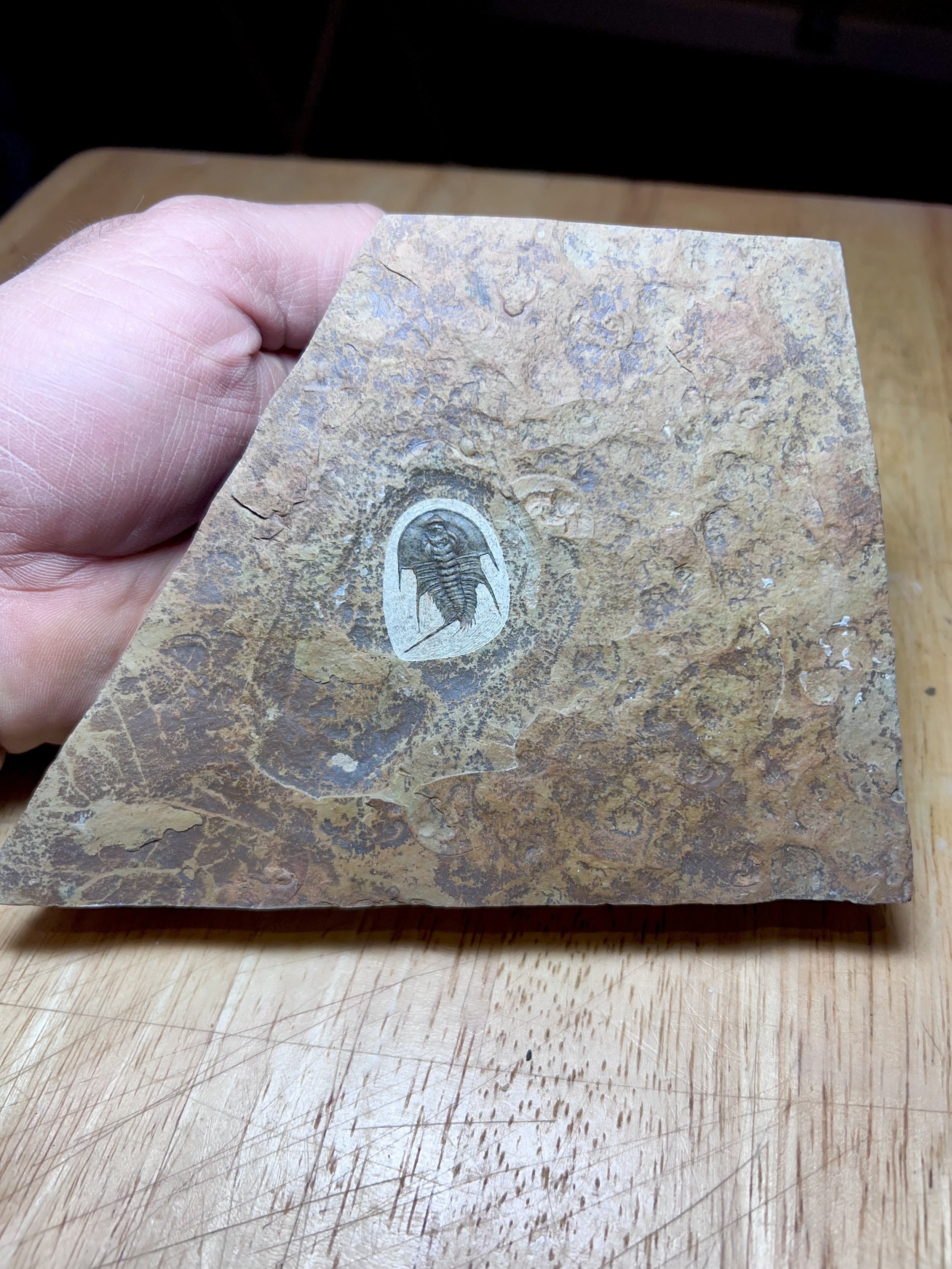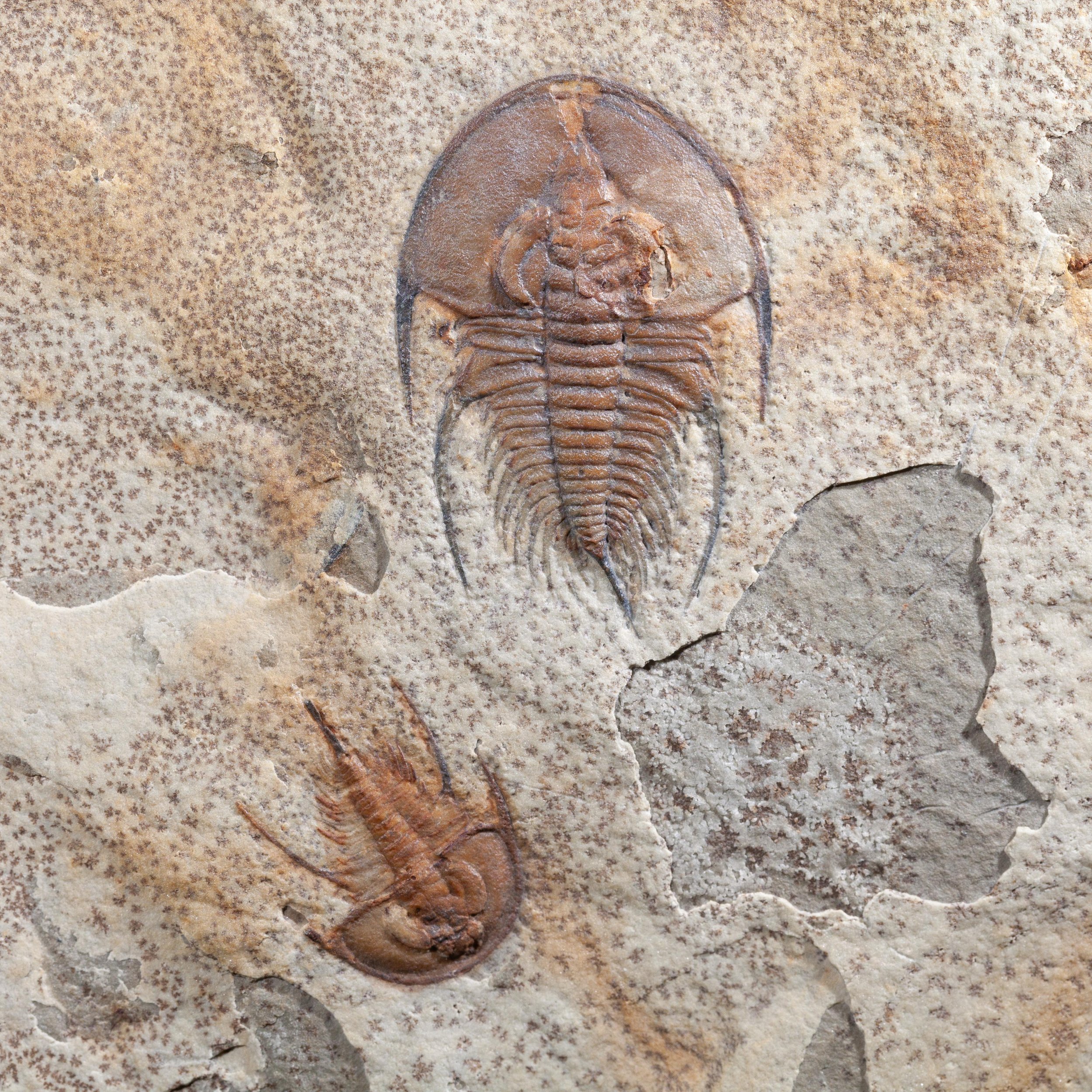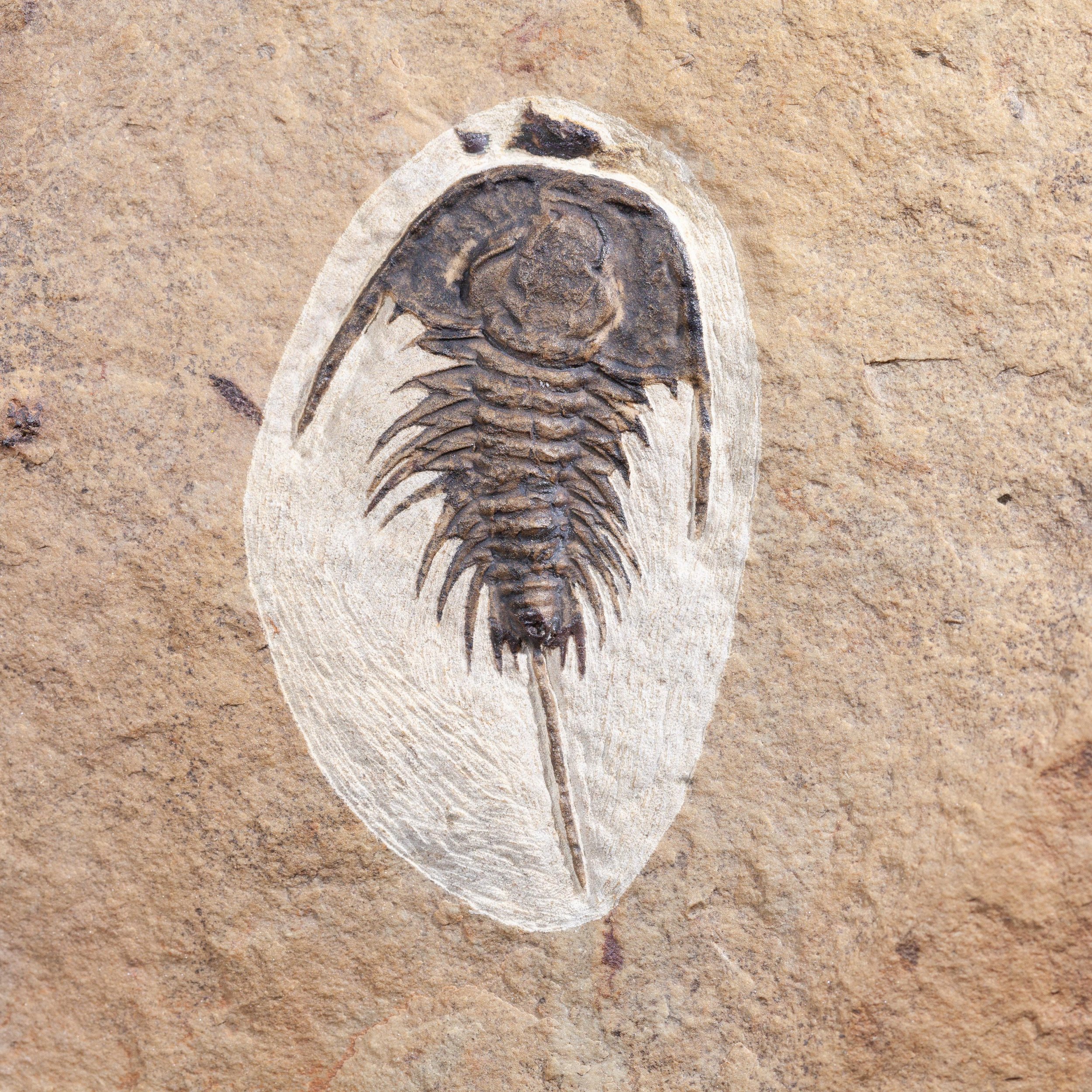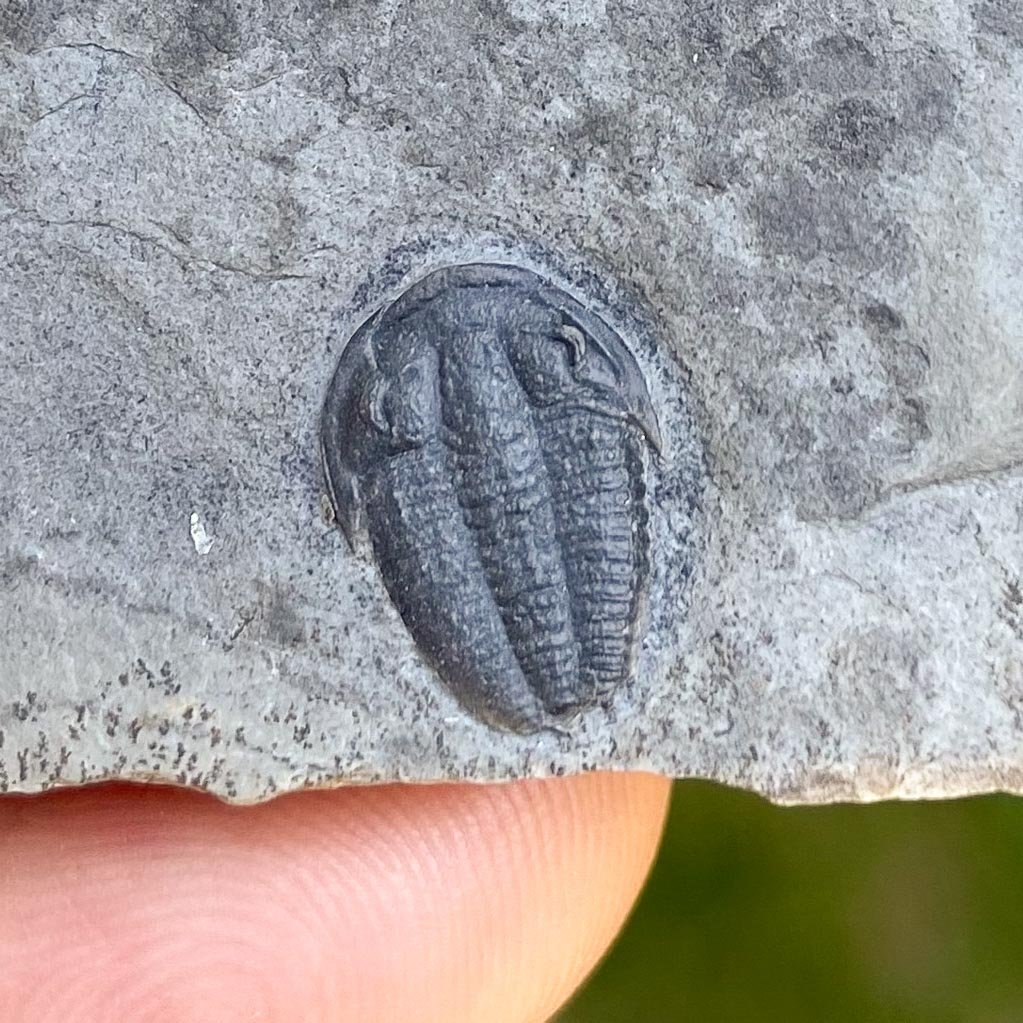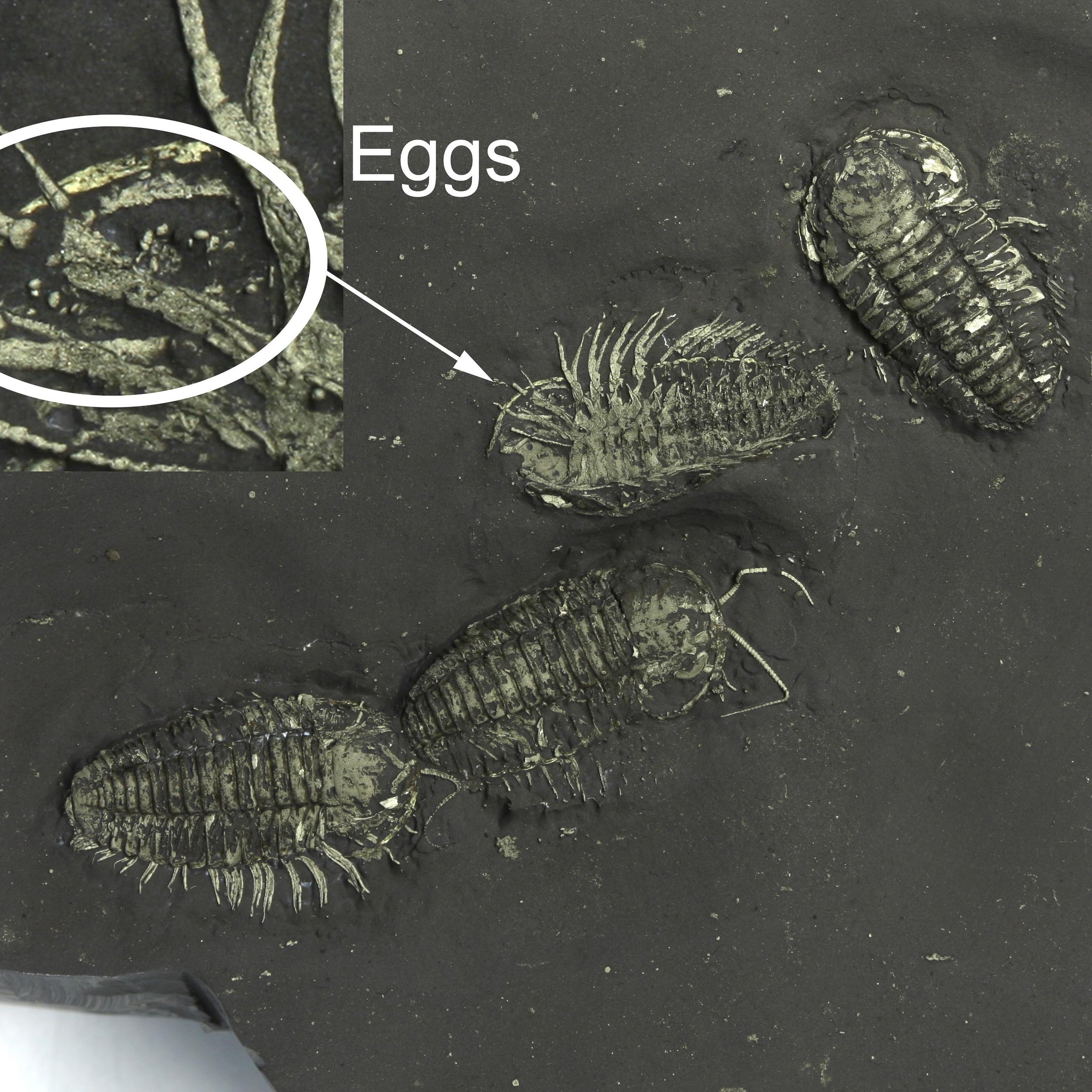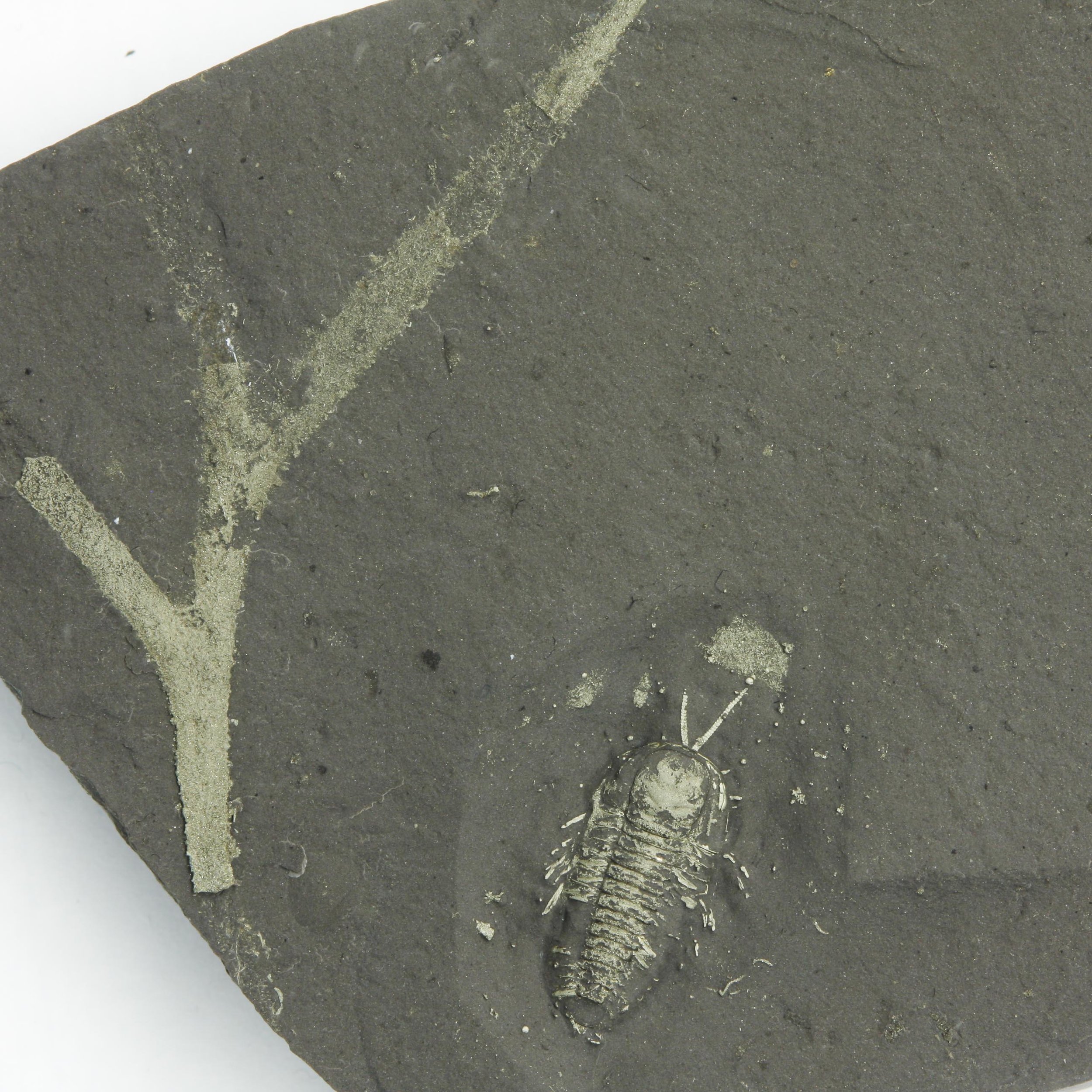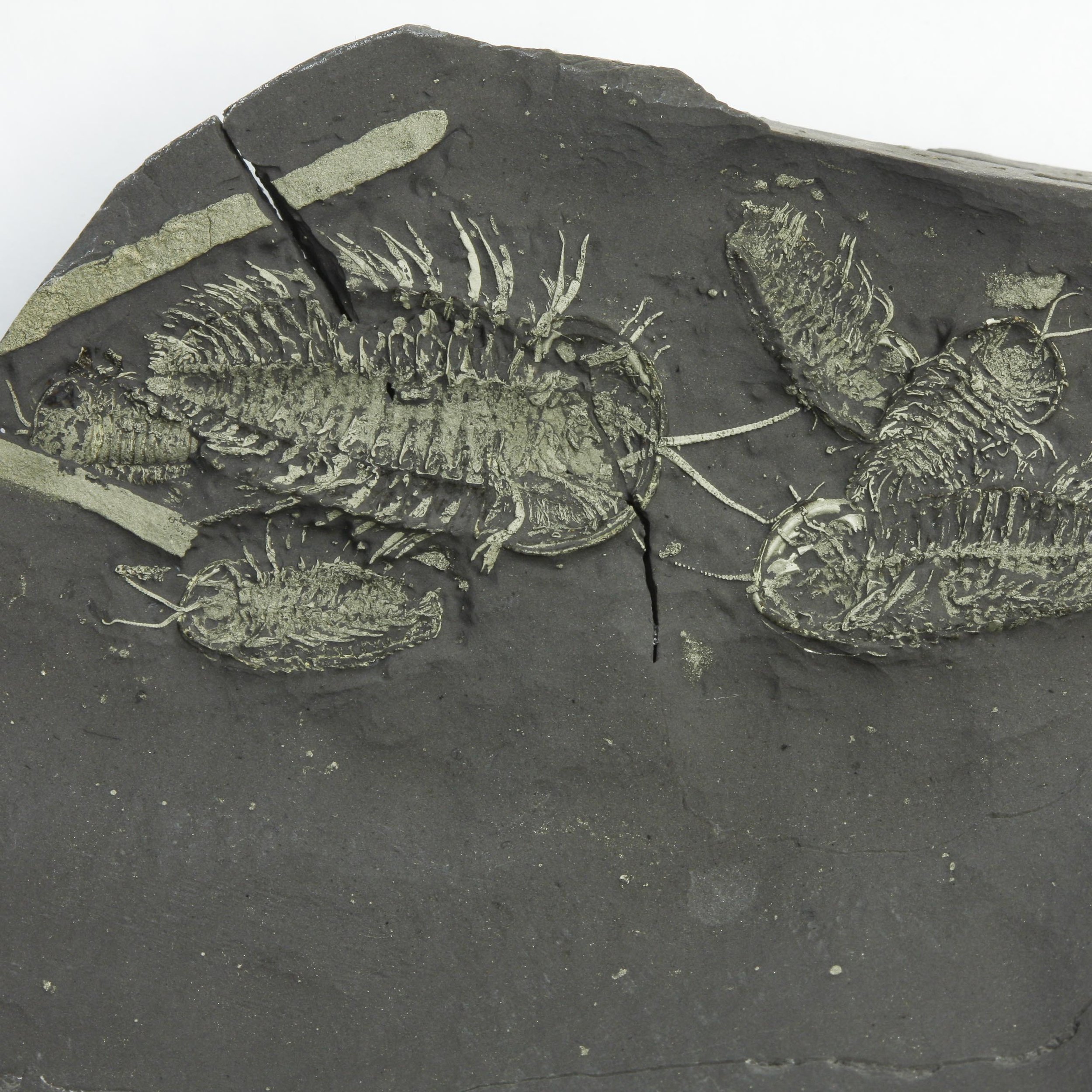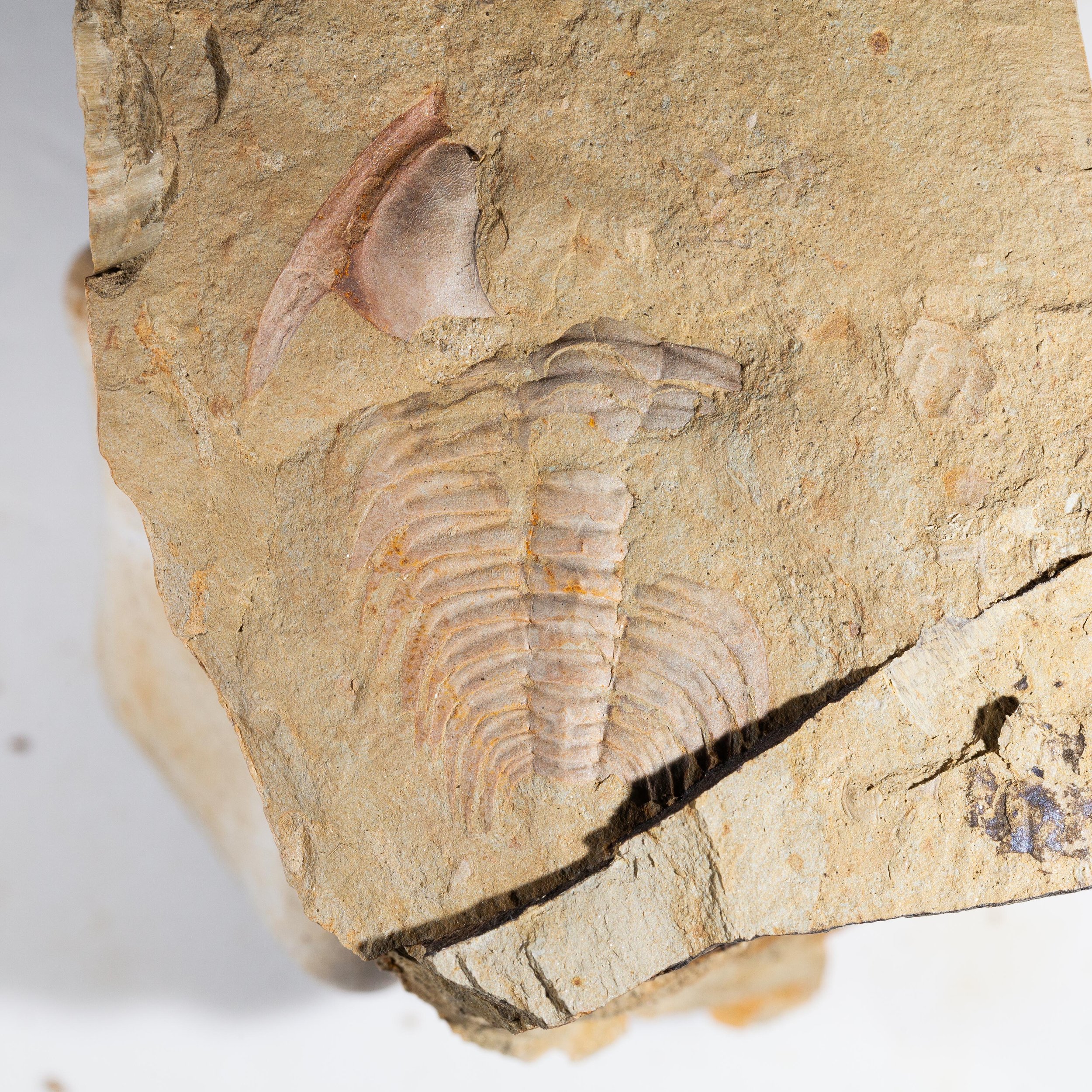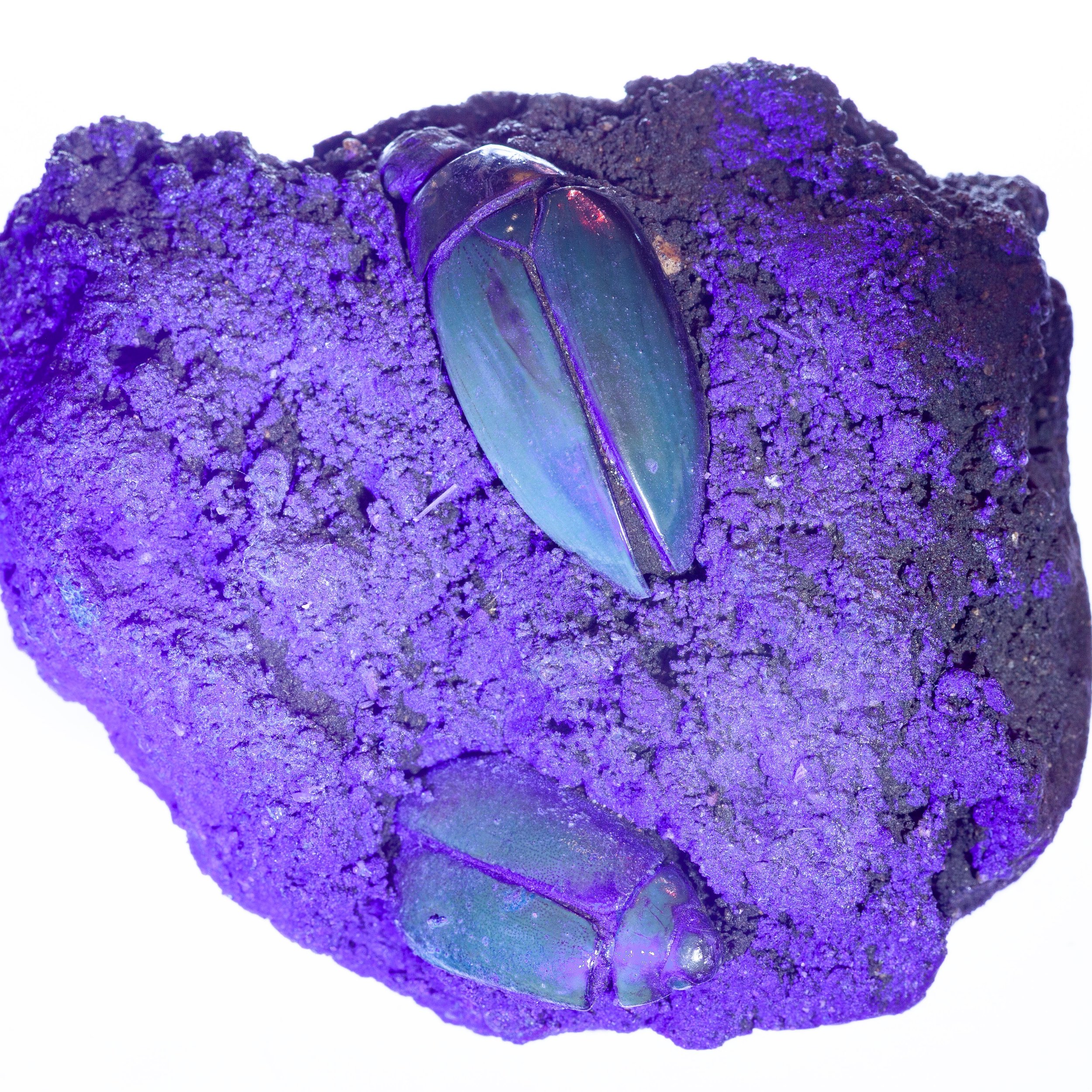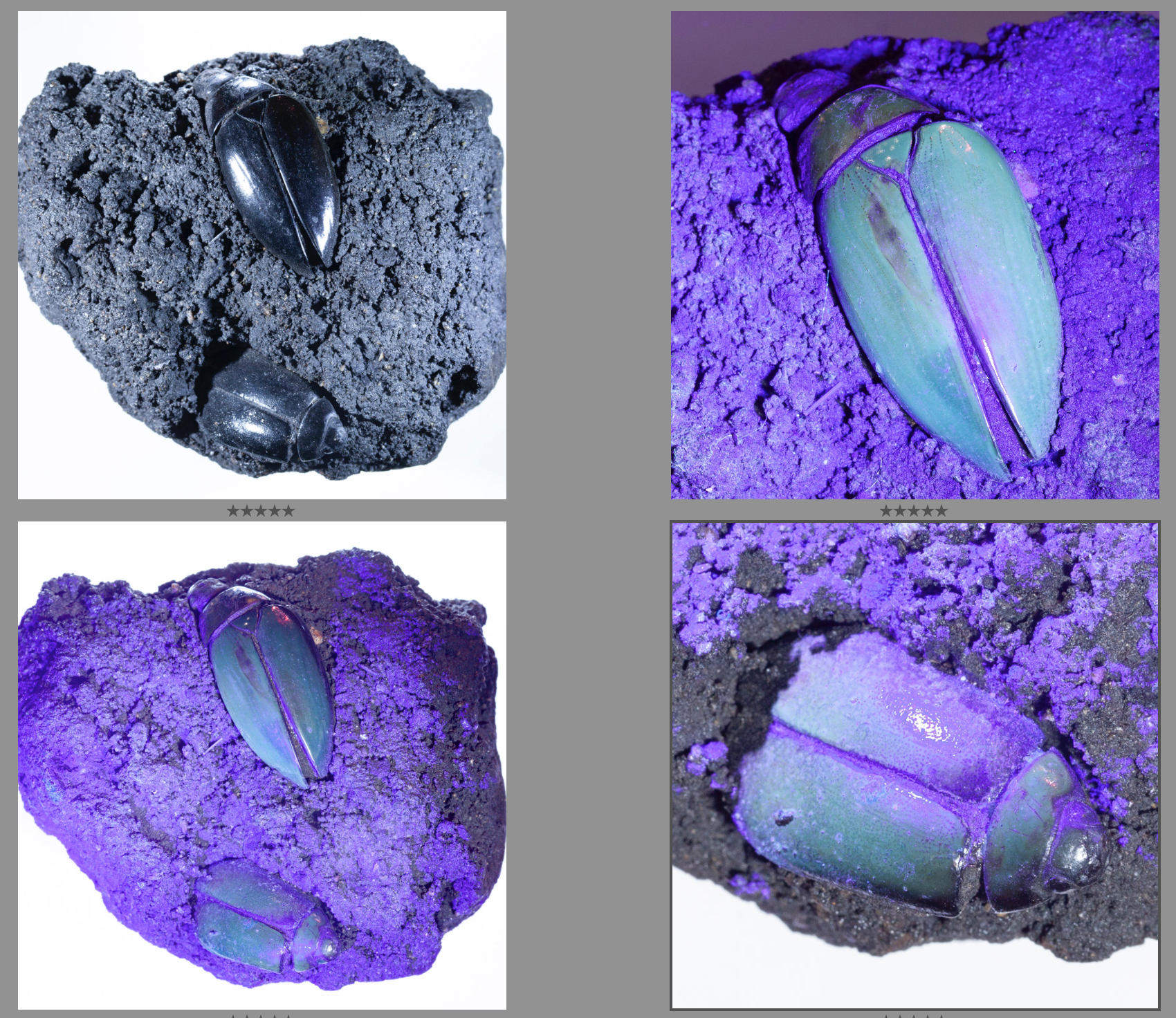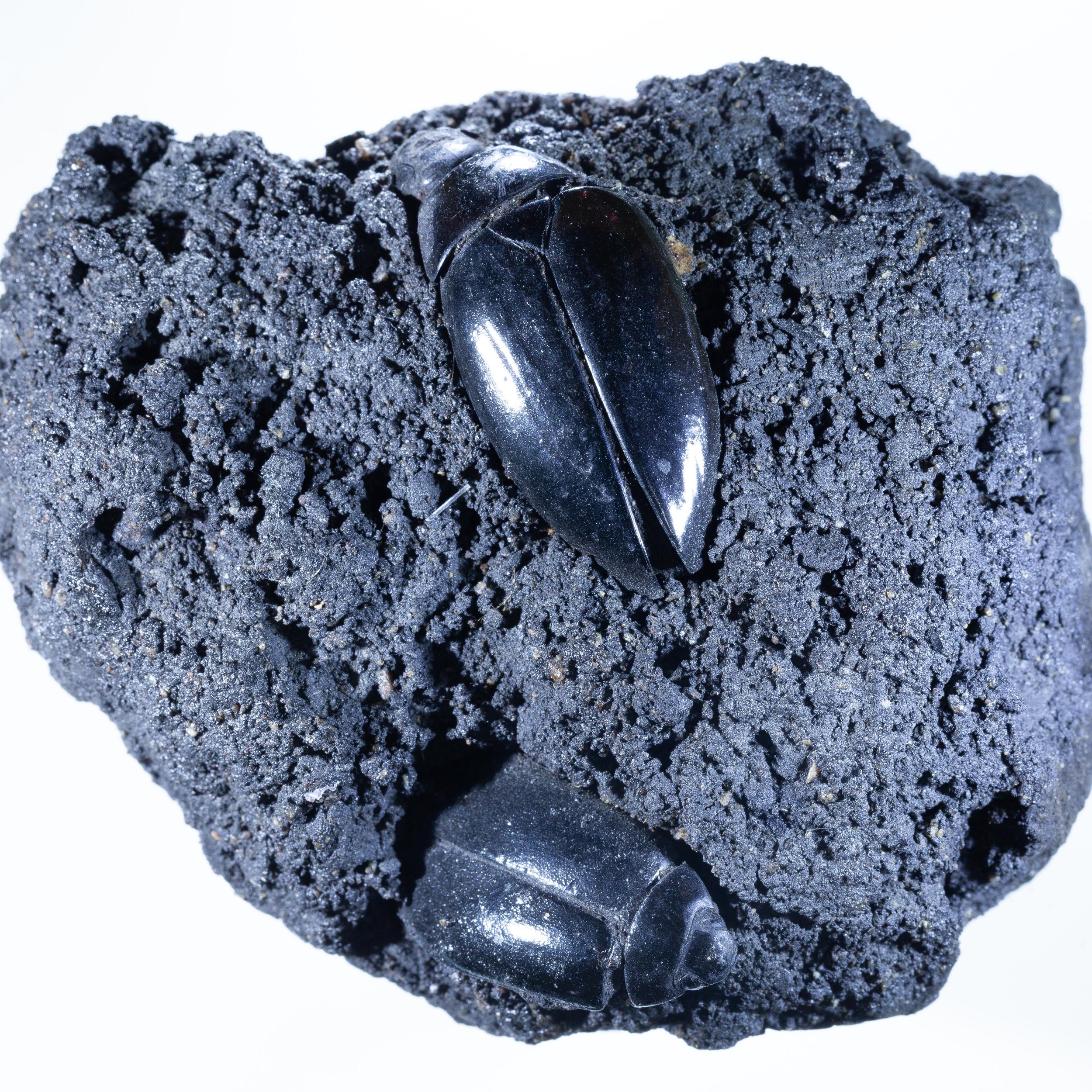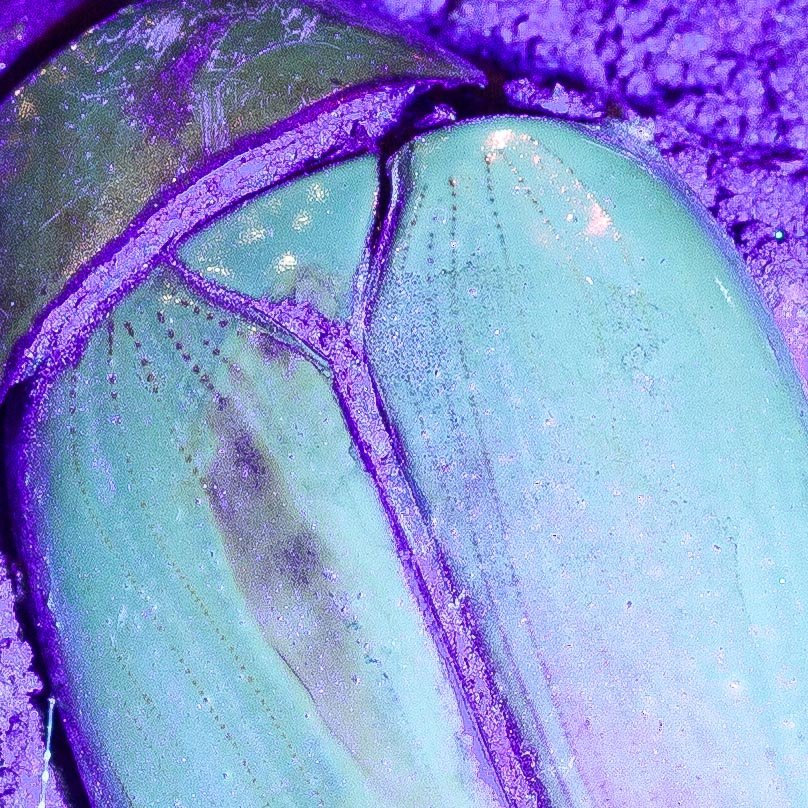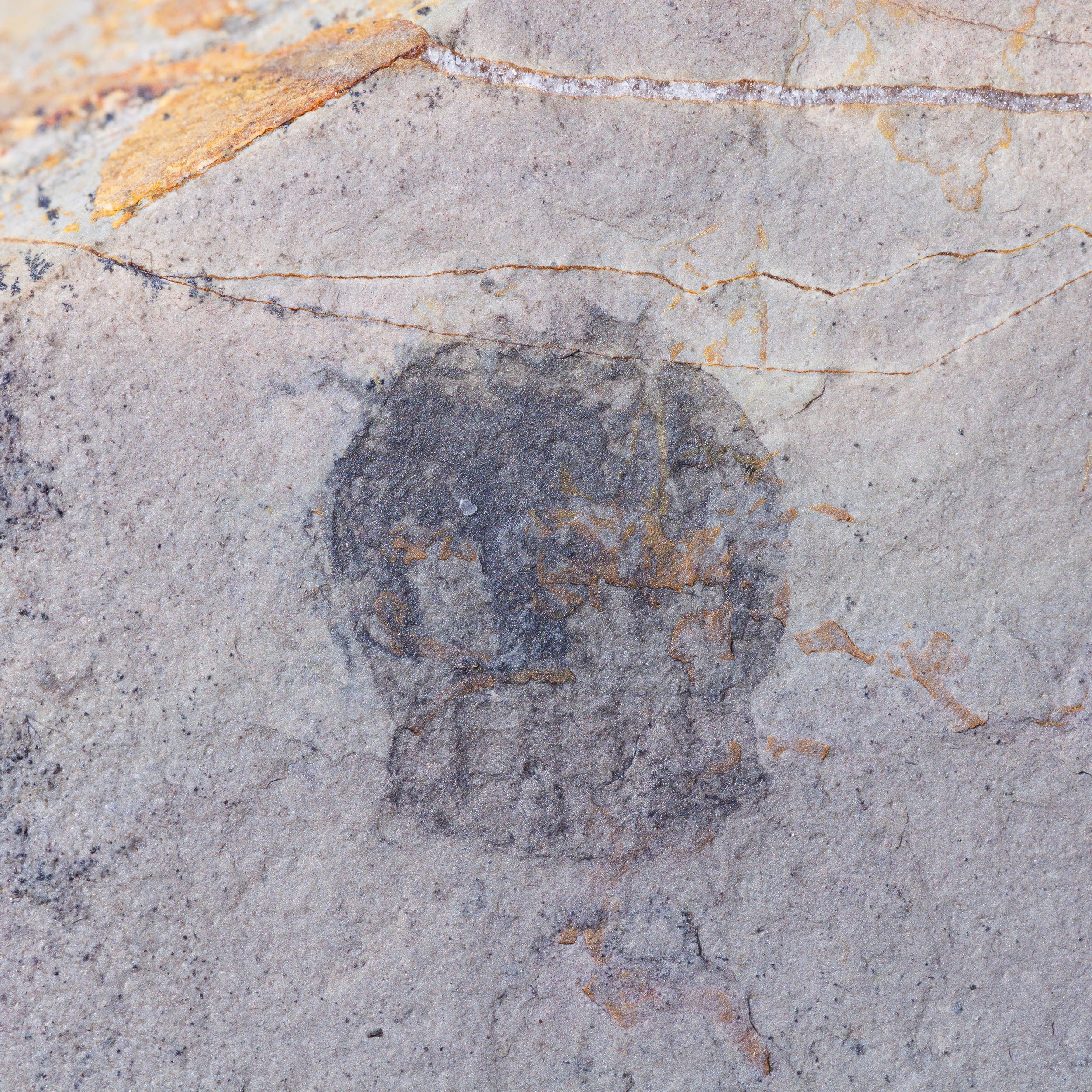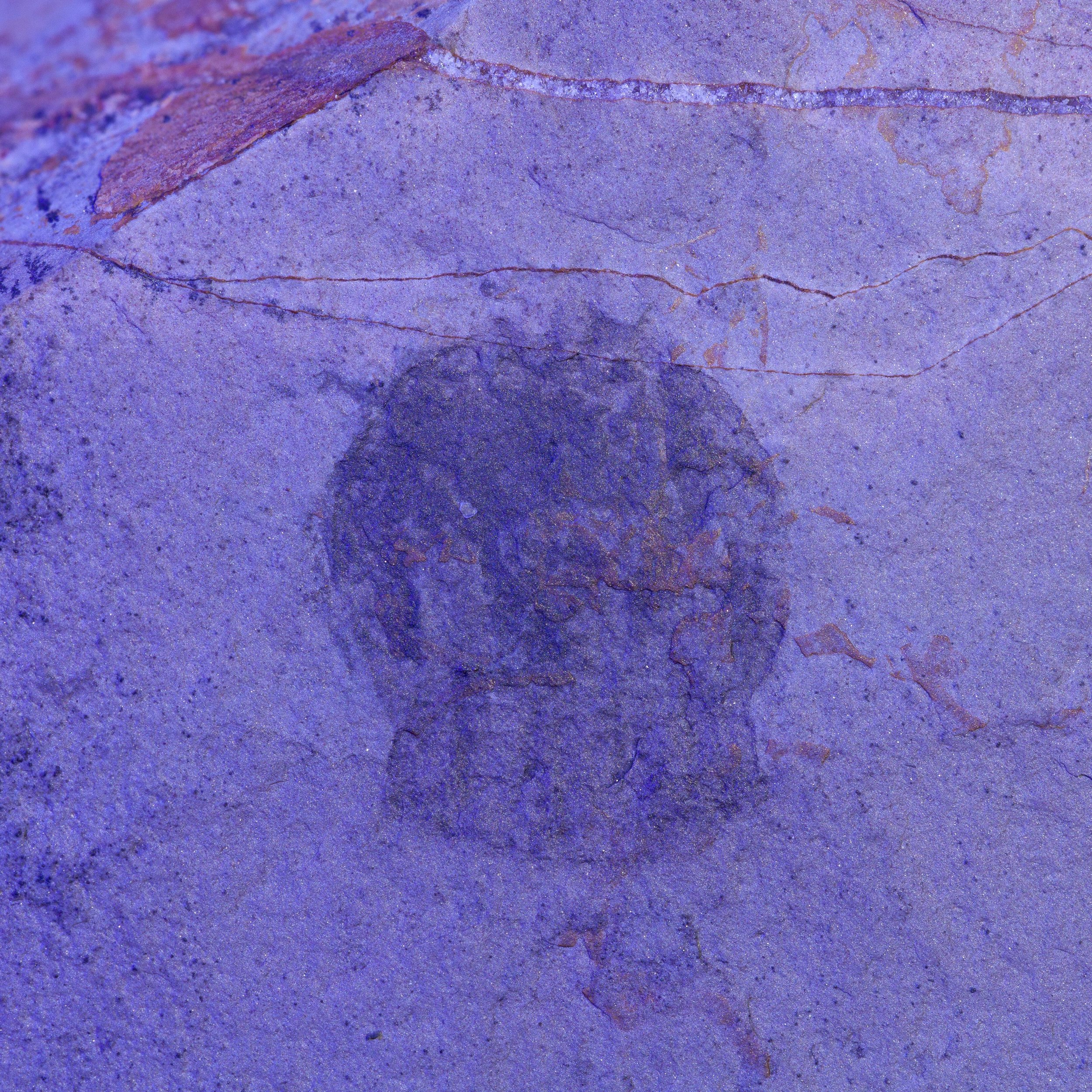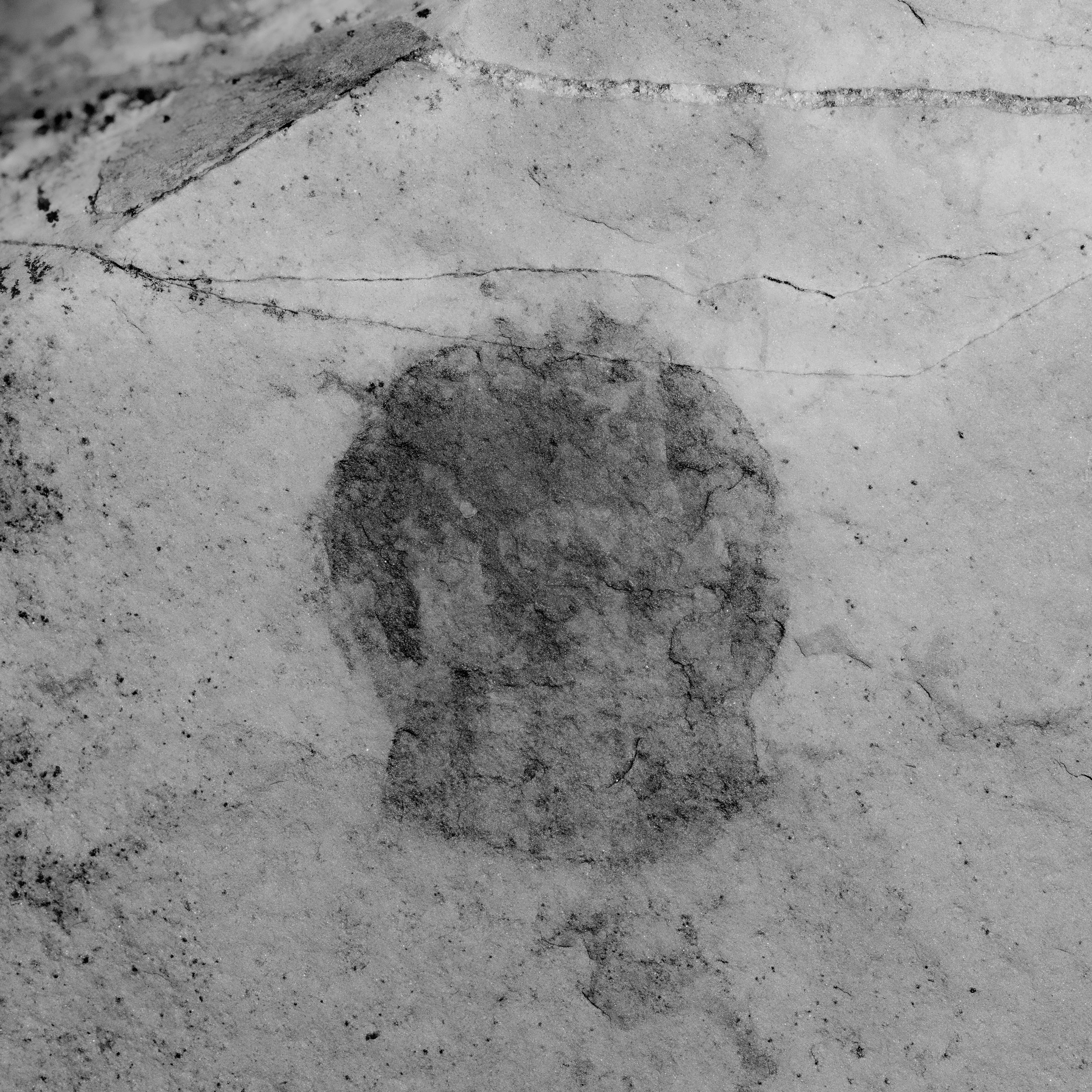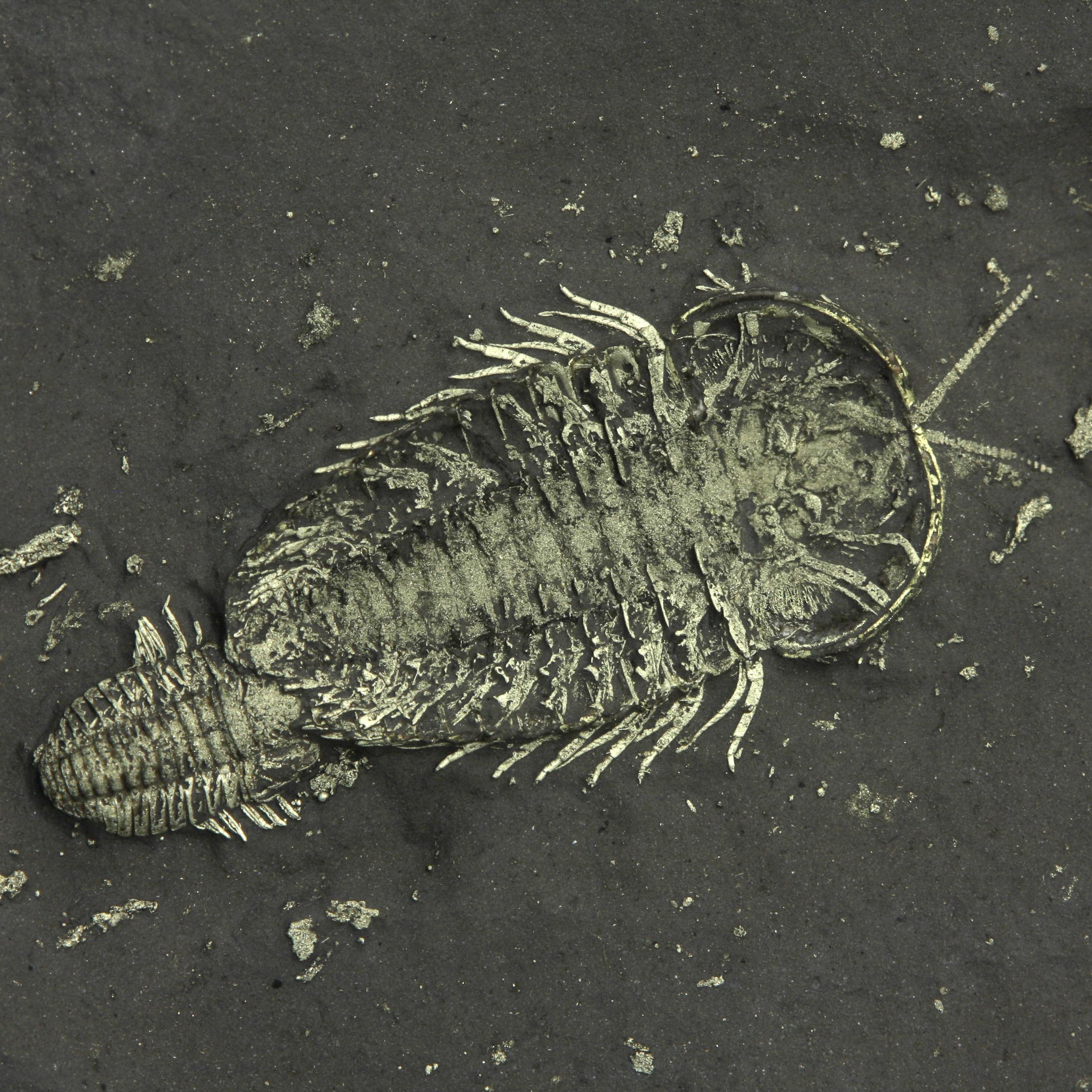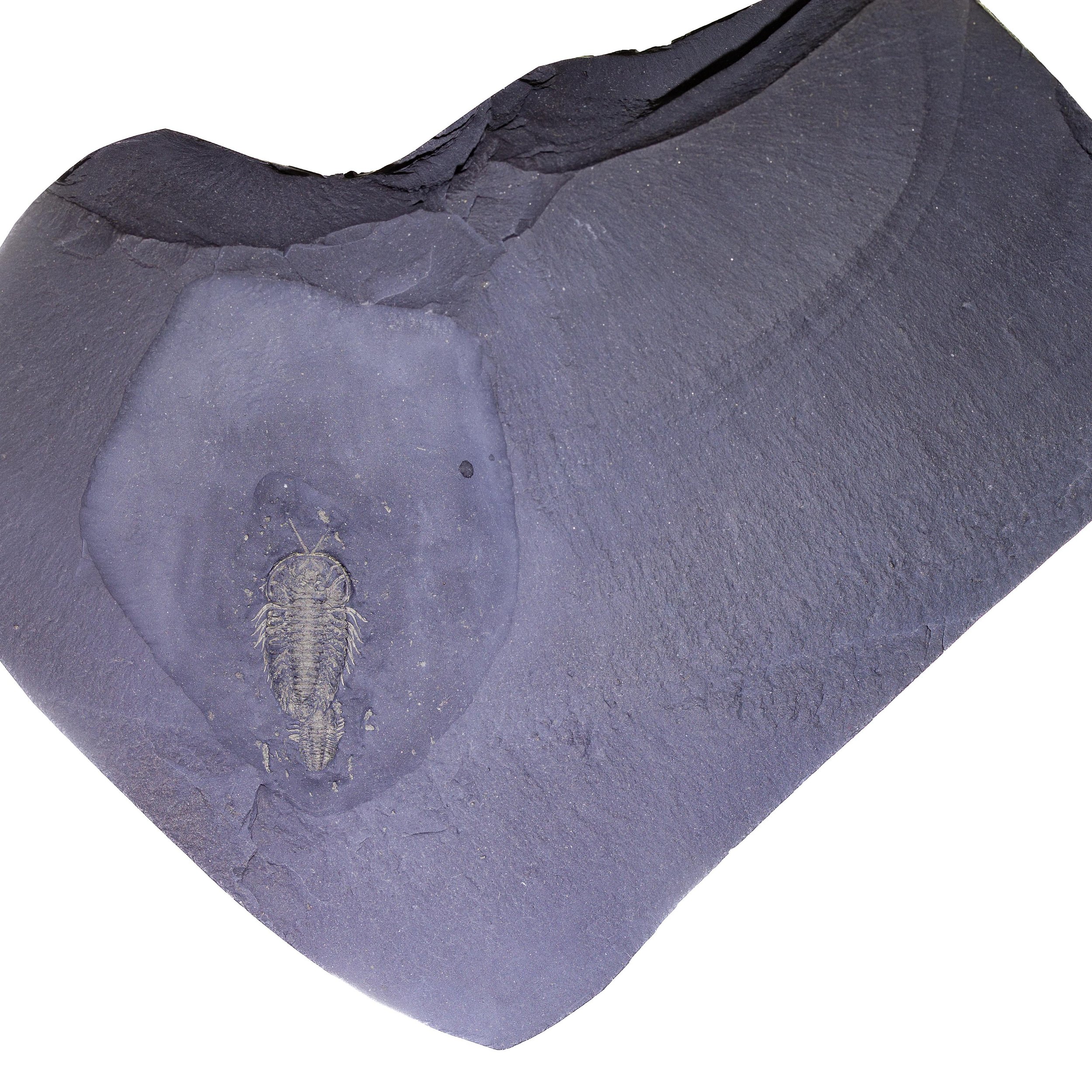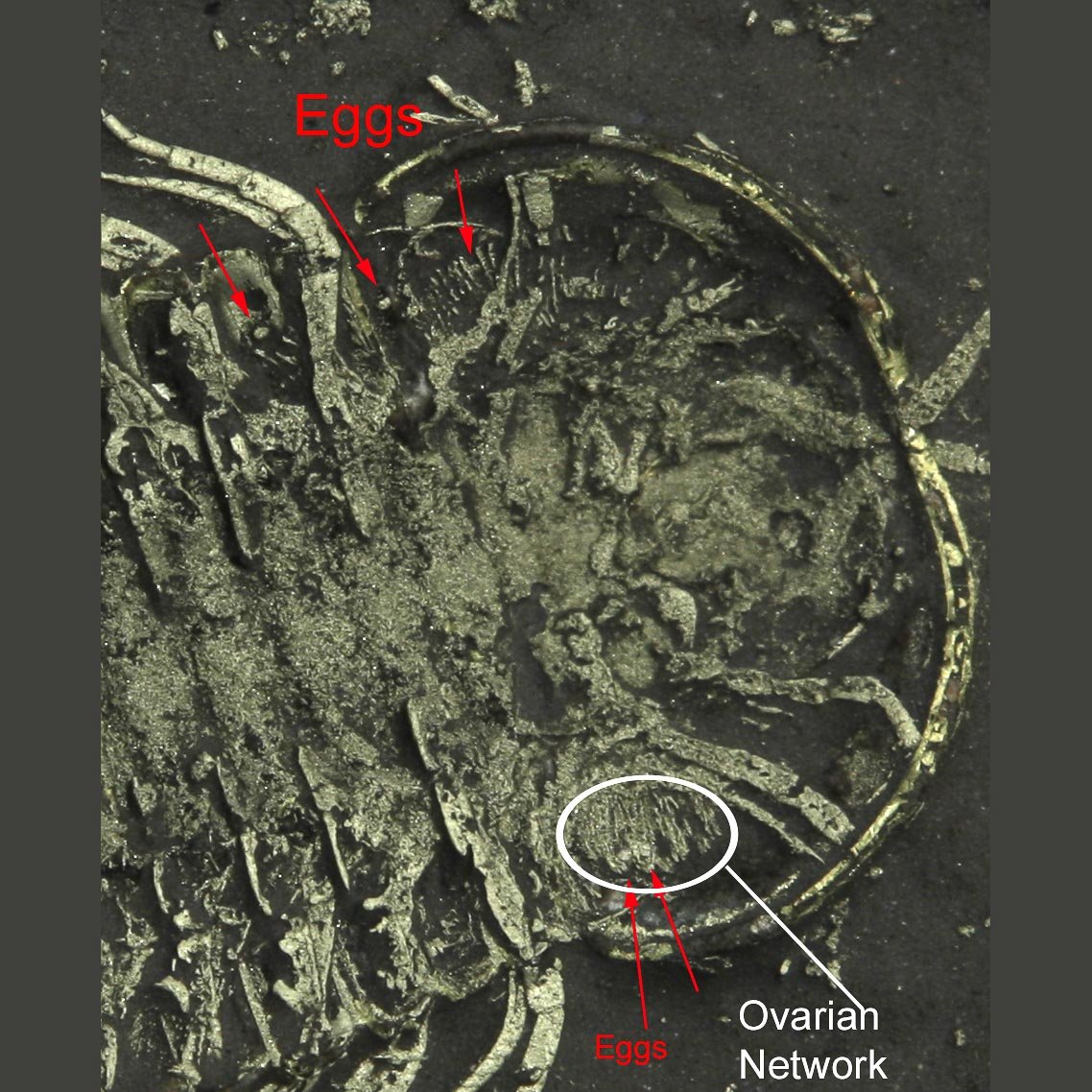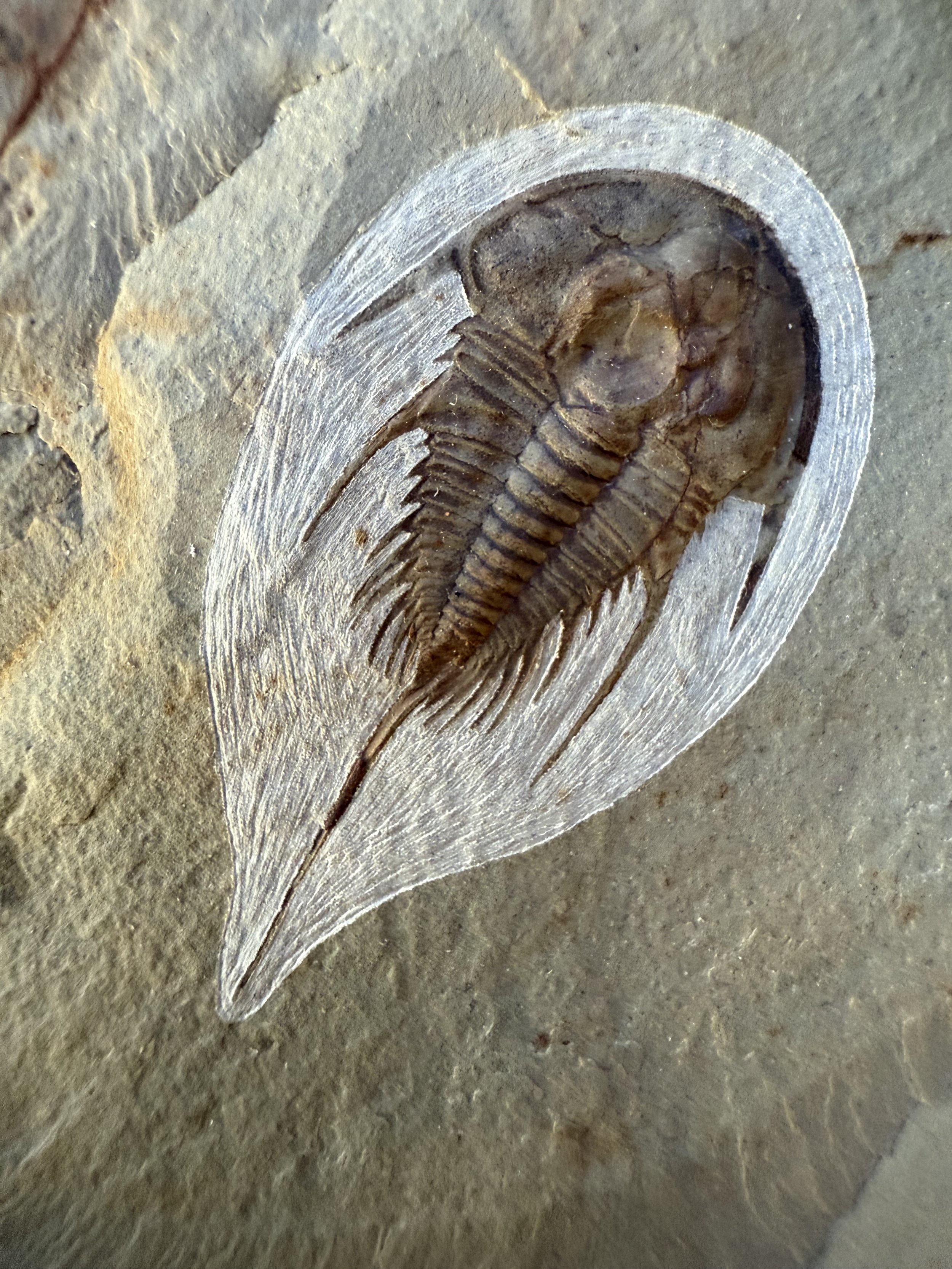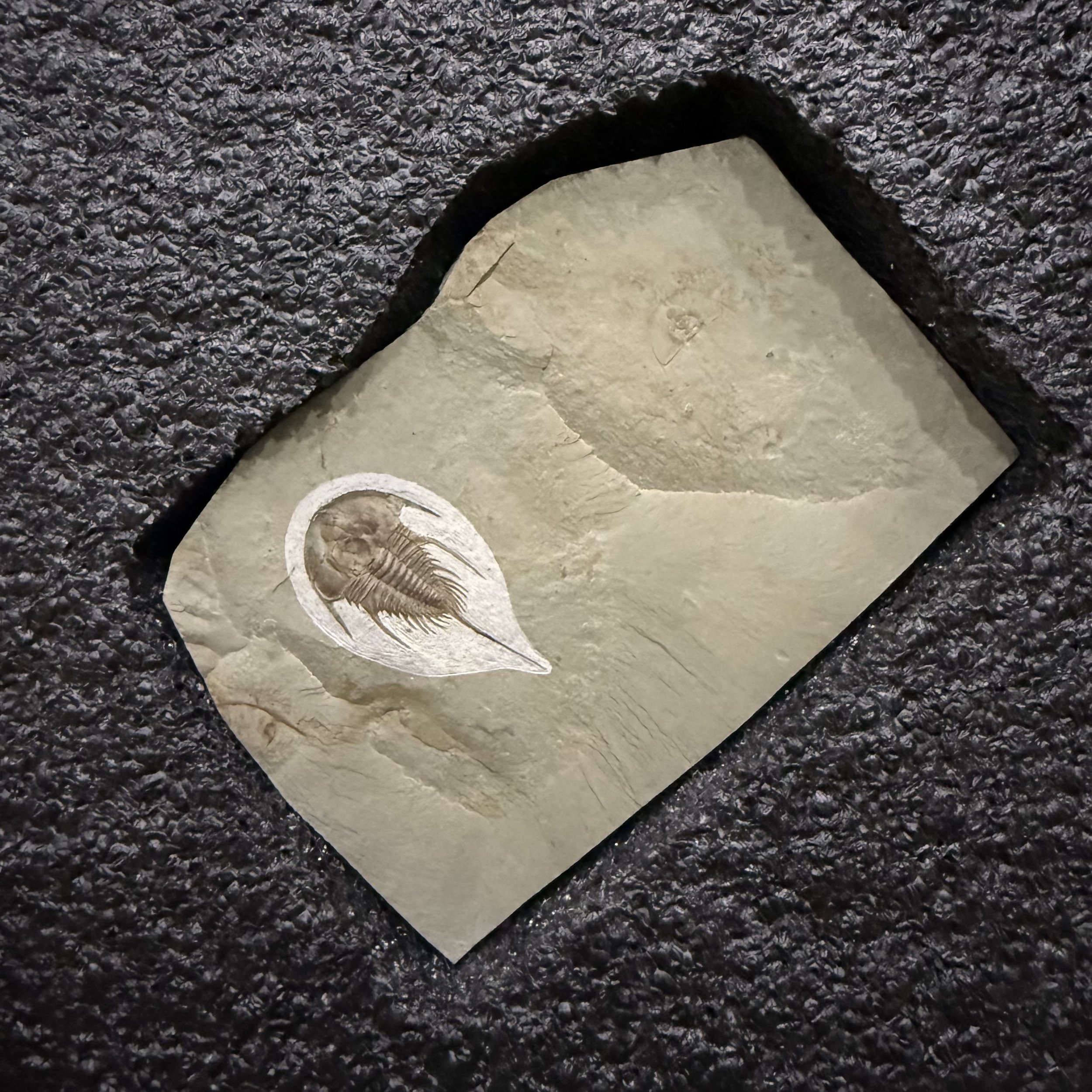Olenellus aff. terminatus
Vendor: Gold Bugs
SKU Number: SQ2180684
Olenellus aff. terminatus trilobite from the 500 million year old Lower Cambrian, Pyramid Shale, Lincoln County, Nevada.
A 2.5cm example of Olenellus aff. terminatus from the Lower Cambrian layers of the Pyramid Shale near the famous Area 51 site in Lincoln County, Nevada. Good examples of this species are hard to find in general, let alone from this locality. The species from the Area 51 locality is closest to O. terminatus with some distinct differences. The Groom Range trilobites existed in a cut off lagoonal setting, isolated from the main ocean. This species in particular represents the last Olenellus species that may have lived in Laurentia. They occur at the extinction boundary and end of the Lower Cambrian. This is easily one of the finest specimens of this species found. Note the curved tail and long tail spine.
Full dimensions are listed below.
Vendor: Gold Bugs
SKU Number: SQ2180684
Olenellus aff. terminatus trilobite from the 500 million year old Lower Cambrian, Pyramid Shale, Lincoln County, Nevada.
A 2.5cm example of Olenellus aff. terminatus from the Lower Cambrian layers of the Pyramid Shale near the famous Area 51 site in Lincoln County, Nevada. Good examples of this species are hard to find in general, let alone from this locality. The species from the Area 51 locality is closest to O. terminatus with some distinct differences. The Groom Range trilobites existed in a cut off lagoonal setting, isolated from the main ocean. This species in particular represents the last Olenellus species that may have lived in Laurentia. They occur at the extinction boundary and end of the Lower Cambrian. This is easily one of the finest specimens of this species found. Note the curved tail and long tail spine.
Full dimensions are listed below.
Vendor: Gold Bugs
SKU Number: SQ2180684
Olenellus aff. terminatus trilobite from the 500 million year old Lower Cambrian, Pyramid Shale, Lincoln County, Nevada.
A 2.5cm example of Olenellus aff. terminatus from the Lower Cambrian layers of the Pyramid Shale near the famous Area 51 site in Lincoln County, Nevada. Good examples of this species are hard to find in general, let alone from this locality. The species from the Area 51 locality is closest to O. terminatus with some distinct differences. The Groom Range trilobites existed in a cut off lagoonal setting, isolated from the main ocean. This species in particular represents the last Olenellus species that may have lived in Laurentia. They occur at the extinction boundary and end of the Lower Cambrian. This is easily one of the finest specimens of this species found. Note the curved tail and long tail spine.
Full dimensions are listed below.
Additional Information
The Pioche Shale is an Early to Middle Cambrian Burgess shale-type Lagerstätte in Nevada that preserves arthropods and worms similar to the Burgess Shale.
In the Eureka area, the Pioche has a variable lithologic character which is most commonly a greenish or grey, calcareous or micaceous shale which may locally be reddish or brown in color with abundant trilobite parts throughout the formation.
Description:
As with most early trilobites, Olenellus has an almost flat exoskeleton, that is only thinly calcified, and has crescent-shaped eye ridges. As part of the suborder Olenellina, Olenellus lacks dorsal sutures. Like all other members of the superfamily Olenelloide, the eye-ridges emerge from the back of the frontal lobe of the central area of the cephalon, that is called glabella. Olenellus also shares the typical character of whole family Olenellidae that the frontal and middle pair of lateral lobes of the glabella are partially merged. This creates two very typical, isolated slits. It can be distinguished from the other two genera in the family, Mesolenellus and Mesonacis, because the angle in the back rim of the cephalon is less than 15°, making the head approximately semi-circular. The genal spines are reaching back no further than the 6th thorax segment, making them 4-5 times as long as the most backward lobe of the glabella. The thorax is 4-4½ times wider that the axis, measured at the 3rd segment. The base of the spine on the 15th thorax segment is almost as wide as the axis itself.

